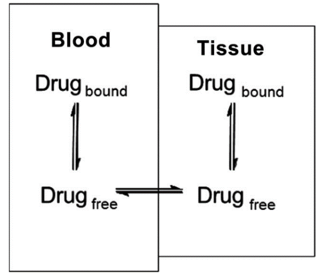Plasma Protein Binding Assay
Creative Bioarray provides Plasma Protein Binding Assay to help customers accurately detect the binding of compounds to plasma proteins and predict the distribution of compounds in blood and tissues.
Why do we need Plasma Protein Binding Assay?

- Drug distribution describes the reversible movement of a drug from one location to another within the body. Usually, it refers to a drug transfer from the blood to various tissues.
- Theoretically, different body parts can receive different doses and remain for a different amount of time.
- The distribution of drugs in the body depends on many aspects, and its binding to tissues and plasma proteins is an important influencing factor.
- The degree of binding to plasma affects the way the drug is distributed to tissues in the body. If the compound is highly bound, it will remain in the plasma, resulting in a low volume of distribution. This may affect the therapeutic effect of the compound by limiting the amount of free compound available to act on the target molecule.
- Extensive plasma protein binding also limits the amount of free compounds available for metabolism, reducing compound clearance.
Brief Protocol
- Equilibrium dialysis is the most widely accepted method for evaluating plasma protein binding because non-specific binding effects are minimized compared to other methods (such as ultrafiltration).
- The semipermeable membrane separates the protein-containing compartment from the protein-free compartment. Equilibrate the system at 37°C. LC-MS/MS quantifies the test compound present in each compartment.
Case Study
- Dialysis membrane and matrix preparation
- Methods and Results
- Test compound and control compound were dissolved in dimethyl sulfoxide (DMSO) to achieve 10 mM stock solutions.
- Prepare the T0 sample for recovery determination.
- Load the dialysis device.
- At the end of the dialysis, a 100 μL aliquot of the supernatant of all samples was taken for LC-MS/MS analysis.
The dialysis membrane strips were soaked in ultra-pure water at room temperature for approximately 1 hour. Before the experiment, the membrane was rinsed and soaked for 20 minutes in ultrapure water.
| Plasma Protein Binding Assay | |||||||
| Cmpd ID | Test Conc. | Matrix | % Unbound | %Unbound SD | %Bound | %Recovery | %Recovery SD |
| Warfarin | 2μM | Human Plasma | 1.32 | 0.1 | 98.68 | 90.5 | 5.1 |
| Sample #1 | 2μM | Human Plasma | 21.64 | 0.2 | 78.36 | 31.1 | 0.6 |
Note: Where: T is the analyte concentration or peak area ratio of analyte/internal standard on the matrix (donor) side of the membrane T0 is the analyte concentration or the peak area ratio of analyte/internal standard in the loading matrix sample at time zero. | |||||||
Quotation and Ordering
If you have any special needs or questions regarding our services, please feel free to contact us. We look forward to cooperating with you in the future.
Reference
- Bohnert, Tonika, and Liang-Shang Gan. "Plasma protein binding: from discovery to development." Journal of pharmaceutical sciences 102.9 (2013): 2953-2994.